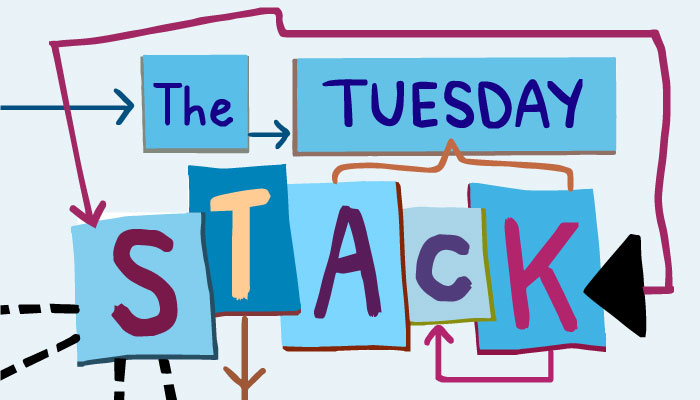Our first news roundup of 2020 sees some big players polishing their offerings, and first up Salesforce, which announced innovations in its Commerce Cloud at NRF this week.
The highlights, which seem likely to be of most interest to sales ops and developers, include:
- New and enhanced Commerce APIs, ensuring the shopper can be reached at any touchpoint
- An Einstein AI Dashboard, providing real time metrics on the impact of AI-powered product recommendations
- A MuleSoft Accelerator for the Commerce Cloud, speeding integrations and other projects through pre-built templates
- A Developer Toolkit and sample apps
- A Commerce Cloud Developer Center, serving as a community to develop headless commerce experiences
- Headless Solutions Kits and a dedicated Trailhead to offer education on best practices for headless.
Let’s talk about headless for a moment. It’s short for “headless CMS,” and it’s a trending topic in the eCommerce space. Essentially, traditional CMSs were built to push content to websites. Now brands seek to meet customers in many channels, most obviously mobile. Headless CMS allows the creation of content in one place, which can then be pushed to any channel and any device. More on headless here, and here’s the Salesforce blog with more detail on the announcements.
**********
If Salesforce comes, can Adobe be far behind? The field of endeavor here is Adobe Experience Manager, and today’s announcement is Cloud Service, natively built in the cloud, extensible, and scalable. As you’d expect from a cloud service, version upgrades can be delivered seamlessly, performance can automatically upscale for peak periods, and there’s outage protection.
In a release, Steve Schults, head of marketing technology at GIS mapping software vendor Esri, said: “Instead of dealing with large-scale deployments of software updates to our site, Adobe Experience Manager as a Cloud Service is constantly updating. We think this process of continuous integration offers huge benefits as the risk of errors occurring during deployments is far reduced.”
Update: More Adobe news from NRF:
- Adobe Stock integration with Magento allowing assets to be added to websites within Magento
- Photoshop-inspired Customer Journey Analytics for retail
- Highly personalized recommendations in Adobe Target, based on total behavior (rather than last viewed/also viewed)
- Journey Orchestration for individual customers, at scale, from acquisition to service.
**********
Meanwhile, HubSpot has been innovating around the enterprise edition of its Marketing Hub. The theme is “ease-of-use,” addressing concerns about under-utilization of technology investments.
The new version of Marketing Hub Enterprise offers:
- Revenue attribution reporting
- AI-powered A/B testing
- Partitioning (the ability to set permissions for marketing assets by various attributes, including teams and regions)
- Email frequency cap
- YouTube integration (allowing access to video performance metrics within the HubSpot dashboard.
Here’s HubSpot CMO Kipp Bodnar, signing the praises of software that “doesn’t suck.”
**********
Last year, we got a look at how Nielsen’s Connect Partner Network program worked. They pulled together their own data from shoppers and combined it with, in that instance, the predictive pricing capabilities of Eversight to deliver promotions insights for third-party retailers.
Now, Nielsen continues to grow its retail and CPG services by acquiring SaaS-based data applications and analytics provider Precima, building out its overall Global Connect portfolio. (Nielsen Global Connect is a spin-off of Nielsen’s media/ratings business.) Global Connect clients will gain access to Precima’s loyalty and personalization features, as well as, according to Nielsen, Precima’s “industry-leading” Transaction Log (TLog) and CRM data platform.
As a result, Nielsen aims at boosting its clients’ ability to measure the impact and success of personalized consumer offerings. —
Chris Wood
**********
Whatever your New Year resolutions, we though you’d want to hear about restaurant industry trends, from a report published today by deals platform RetailMeNot: 2020’s Restaurant Marketing Insights. Let’s cut to the nuts:
- Out of home dining (including delivery for these purposes) is surging, with consumers spending an average of over $280 per month
- 83 percent of consumers eat outside the home at least once per month
- 74 percent of millennials and Gen Z use digital to search for dining deals and discounts, 57 percent of Gen X and boomers
Interestingly, despite the explosion of digital content on restaurants created by professional and amateur influencers (okay, bloggers) over the last few years, millennials and Gen Zers, at least, are more influenced by discounts and deals than by digital celebrity endorsements. Naturally, RetailMeNot has some skin in this game, but they report that over 80 percent of diners are influenced by deals and discounts, and would even switch their restaurant choice in response.
Time to get on the scales again.







